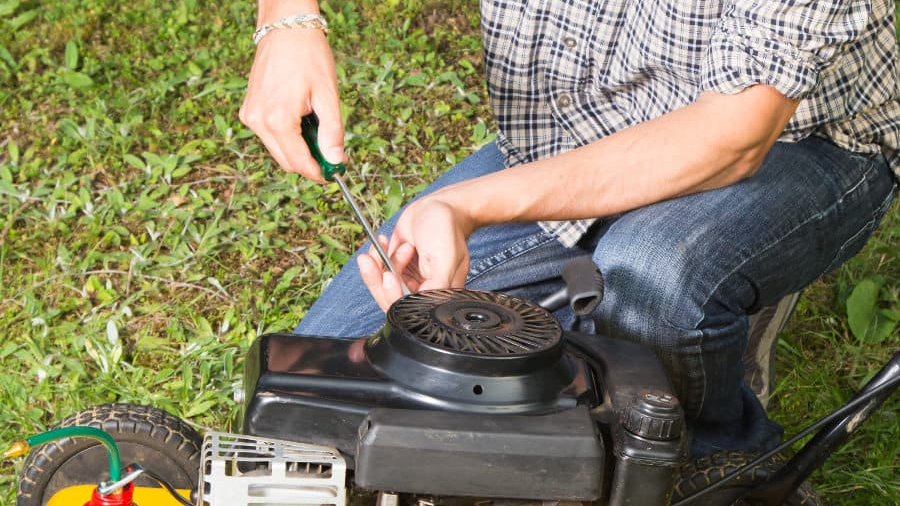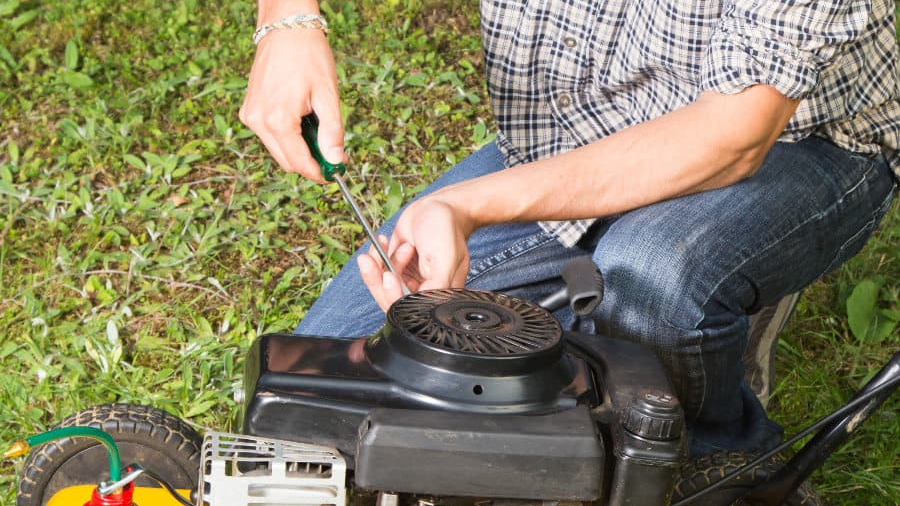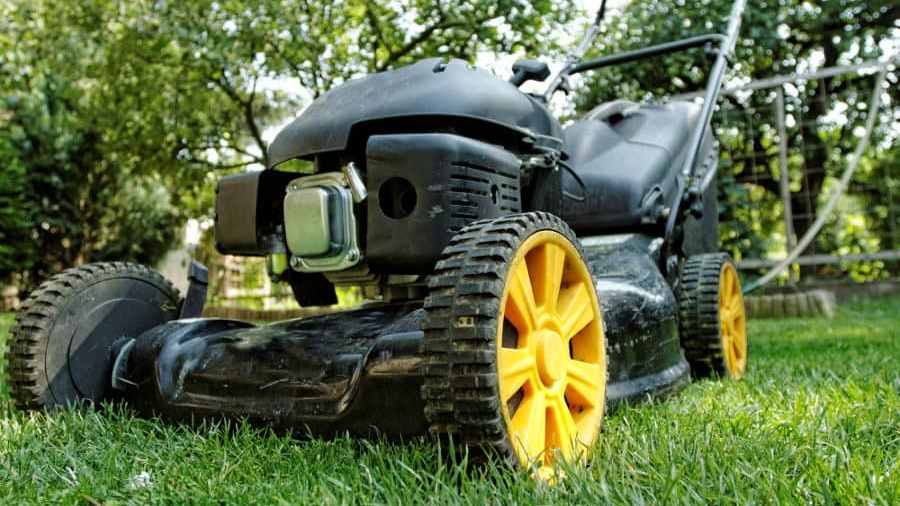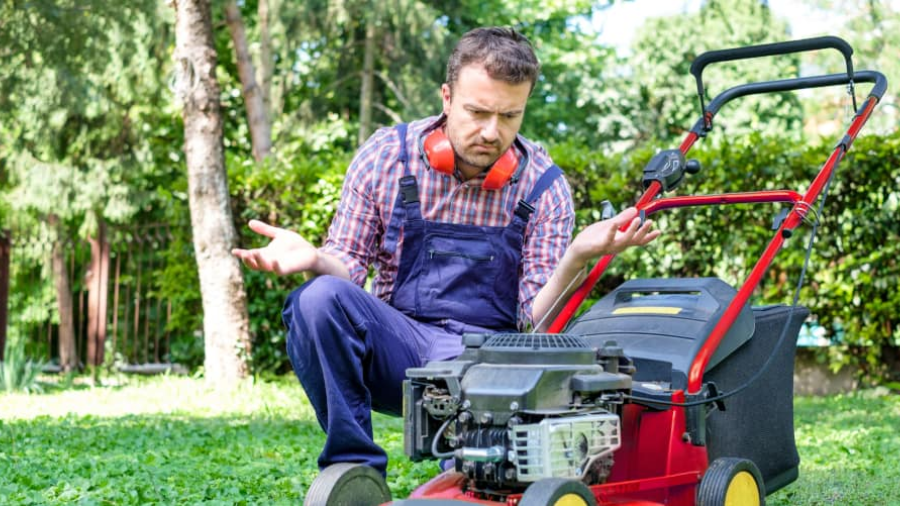Lawn mowers are an essential tool for keeping your yard looking its best, but when they backfire, it can be a frustrating and potentially dangerous situation. Backfiring occurs when unburned fuel is ignited in the engine’s exhaust, causing a loud pop or bang.
This can be caused by a variety of factors, ranging from simple issues like a dirty air filter to more complex problems like a misfiring spark plug.
So what causes lawn mowers to backfire and how can you fix it? In this comprehensive guide, we will delve into the common causes of backfiring and provide practical solutions to help you get your lawn mower running smoothly once again.
Whether you’re a seasoned DIYer or just starting out and tired of dealing with backfiring, keep on reading because this guide will provide valuable insights and expert advice to help your lawn mower work like new once again.
When Does Your Lawn Mower Backfire?
Backfiring in a lawn mower is a typical issue that can happen at any stage of use, whether you’re starting it up, mowing your lawn, or shutting it down. But what exactly causes your lawn mower to backfire, and when is it most likely to happen? Understanding the timing and circumstances surrounding backfiring can help you diagnose the problem and find the right solution. Here are a few of the most common situations when your lawn mower may backfire:
- When Starting: If you hear a loud bang or pop when starting your lawn mower, it could be due to a mixture of too much fuel and not enough air in the engine. This can cause unburned fuel to ignite in the exhaust, resulting in backfiring.
- During Mowing: If your lawn mower backfires while you’re mowing, it could be a sign of a dirty air filter, clogged carburetor, or malfunctioning spark plug. These problems can prevent the engine from getting the proper air and fuel mixture, causing backfiring.

- After Shutting Down: If you hear backfiring after turning off your lawn mower, it could be due to hot fuel igniting in the muffler. This is a common problem that can be resolved by letting the engine cool down before shutting it off.
By understanding when your lawn mower is most likely to backfire, you can better diagnose the problem and find the right solution. Whether you’re dealing with this issue when starting, mowing, or shutting down, there’s always a solution to get your lawn mower running smoothly again.
What Causes my Lawn Mower to Backfire and Fail to Start?
A backfiring lawn mower is a frustrating enough problem on its own, but when it also refuses to start, it can quickly become a headache. This double trouble can be caused by a variety of factors, from simple issues like a dirty air filter to more complex problems like a faulty spark plug. So why does your lawn mower backfire and not start, and what can you do about it? Here are a few common reasons:
- Dirty Air Filter: A dirty air filter can prevent the engine from getting enough air, causing backfiring and making it difficult to start. Cleaning or replacing the air filter should resolve the problem.
- Clogged Carburetor: A clogged carburetor can also prevent the engine from getting enough air, causing backfiring and making it difficult to start. This issue should be fixed by cleaning or rebuilding the carburetor.
- Faulty Spark Plug: A faulty spark plug can cause misfiring and make it difficult to start the engine. This will be solved by replacing the spark plug.
- Fuel Issues: If the fuel in your lawn mower is stale or contaminated, it can cause backfiring and make it difficult to start. Drain the fuel tank and add fresh fuel to resolve the issue.
By understanding why your lawn mower backfires and doesn’t start, you can take the right steps to get it running smoothly again. Whether you’re dealing with a dirty air filter, clogged carburetor, faulty spark plug, or fuel issues, there’s always a solution to get your machine back on track.
Comparison of Backfire and After-Fire
Backfire and after-fire are two distinct, yet related, phenomena that occur in internal combustion engines.
Backfire refers to the explosion of an unburned fuel-air mixture in the intake or exhaust system of an engine, which results in a loud popping noise. This occurs when the air-fuel mixture ignites outside of the engine’s combustion chamber. However, it can be caused by a number of factors as well, such as incorrect carburetor adjustment, a defective spark plug, or a clogged muffler.
After-fire, on the other hand, occurs when the combustion of fuel continues even after the engine has been turned off. This can result in a smoky or smoldering exhaust and can be caused by unburned fuel remaining in the engine’s hot exhaust system.
In conclusion, backfire is a sudden explosion of an unburned fuel-air mixture, while after-fire is the continued burning of fuel after the engine has been turned off. Both can be caused by similar underlying issues, but they result in different effects and symptoms.
Causes of After-Fire:
- Fuel-rich air-fuel mixture
- Overflowing fuel injectors
- Engine leaks in the intake or exhaust system
- Overheated exhaust system
- Engine design or tuning issues

Potential remedies for After-Fire:
- Adjusting the air-fuel mixture to the correct ratio
- Cleaning or replacing fuel injectors
- Repairing engine leaks in the intake or exhaust system
- Installing heat shields to protect the exhaust system
- Adjusting engine design or tuning to prevent after-fire.
Lawn Mower Backfires While Running
When your lawn mower starts backfiring while it’s running, it can be a sign of a problem with the engine’s air and fuel mixture. The backfiring is caused by unburned fuel igniting in the muffler, creating a loud bang or pop. This can occur for several reasons, including a clogged air filter, a dirty carburetor, a malfunctioning spark plug, or stale or contaminated fuel. Each of these issues can affect the engine’s performance and cause it to run unevenly, leading to backfiring.
To diagnose and fix the problem, you’ll need to take a closer look at each of these components and determine which one is causing the backfiring. For example, if you find that your air filter is clogged, you may need to replace it. On the other hand, if the carburetor is dirty, you may be able to clean it and restore its performance.
Ultimately, fixing a backfiring lawn mower requires a careful approach and a thorough understanding of the engine’s components. But with a bit of patience and the right tools, you should be able to get your lawn mower running smoothly again and get back to mowing your lawn without any interruptions.
Other Causes of Backfire
Here are some causes of backfire in internal combustion engines:
- Incorrect carburetor adjustment
- Defective spark plug or ignition system
- Muffler obstruction
- Intake vacuum leaks
- The fuel mixture is too lean
- Clogged air filter
- Timing issues
- Stale or low-octane gasoline
- Engine overheating.
Potential Fixes for a Backfiring Mower:
A backfiring lawn mower can be fixed by checking and adjusting the carburetor, ensuring that the spark plug and ignition system are functioning properly, clearing any muffler obstructions, and checking for vacuum leaks in the intake.
Lawn Mower Starts then Dies after a Few Seconds:
This issue may be caused by a clogged air filter, a fuel mixture that is too lean, or a timing problem. To fix it, clean or replace the air filter, adjust the carburetor, and check the timing.
Lawn Mower Runs For 30 Minutes Then Dies:
The mower dying after running for a set period of time could be caused by overheating. Check the engine for overheating and make sure that it has enough oil and gasoline to run for an extended period.

Lawn Mower Stops Running When It Gets Hot:
If the mower stops running when it gets hot, it could be due to the engine overheating or a problem with the ignition system. Check the engine temperature and replace the spark plug if necessary.
Lawn Mower Cuts Out When Blades Engaged:
The mower cutting out when the blades are engaged may indicate a problem with the power takeoff (PTO) clutch or the blades themselves. Check the PTO clutch for wear or damage, and make sure the blades are properly tightened.
Lawn Mower Cuts Out Going Uphill:
A lawn mower that cuts out when going uphill may be due to a lack of power. Check the carburetor and fuel mixture, and make sure that the air filter is clean. Additionally, make sure the engine is not overheating.
Also Read:
FAQs
Q: What is backfire in an internal combustion engine?
A: Backfire is the explosion of an unburned fuel-air mixture in the intake or exhaust system of an internal combustion engine, which results in a loud popping noise. It occurs when the air-fuel mixture ignites outside of the engine’s combustion chamber.
Q: What causes a backfire in an engine?
A: Backfire can be caused by a number of factors, such as incorrect carburetor adjustment, a defective spark plug, a clogged muffler, a vacuum leak in the intake, a fuel mixture that is too lean, a clogged air filter, timing issues, stale or low-octane gasoline, and engine overheating.
Q: What is the difference between backfire and after-fire?
A: Backfire refers to the explosion of an unburned fuel-air mixture in the intake or exhaust system of an engine, while after-fire is the continued burning of fuel after the engine has been turned off. Both can be caused by similar underlying issues, but they result in different effects and symptoms.
Q: What causes after-fire in an internal combustion engine?
A: After-fire can be caused by a fuel-rich air-fuel mixture, overflowing fuel injectors, engine leaks in the intake or exhaust system, an overheated exhaust system, or engine design or tuning issues.
Q: How can after-fire be prevented or remedied?
A: To prevent or remedy after-fire, it is important to address the underlying cause, such as adjusting the air-fuel mixture, cleaning fuel injectors, repairing engine leaks, protecting the exhaust system with heat shields, or adjusting engine design or tuning.
Conclusion
In conclusion, backfire and after-fire are two distinct, yet related, phenomena that can occur in internal combustion engines. Backfire results from the explosion of an unburned fuel-air mixture in the intake or exhaust system, while after-fire is the continued burning of fuel after the engine has been turned off.
Both can be caused by similar underlying issues, such as incorrect carburetor adjustment, overflowing fuel injectors, engine leaks, or engine design or tuning issues. To prevent or remedy backfire and after-fire, it is important to address the underlying cause and take appropriate measures to fix the issue.
If you found this information helpful, be sure to check out our other articles on a variety of topics related to internal combustion engines and vehicle maintenance. Our articles are written by experts in the field and are designed to provide you with the latest and most accurate information available.
